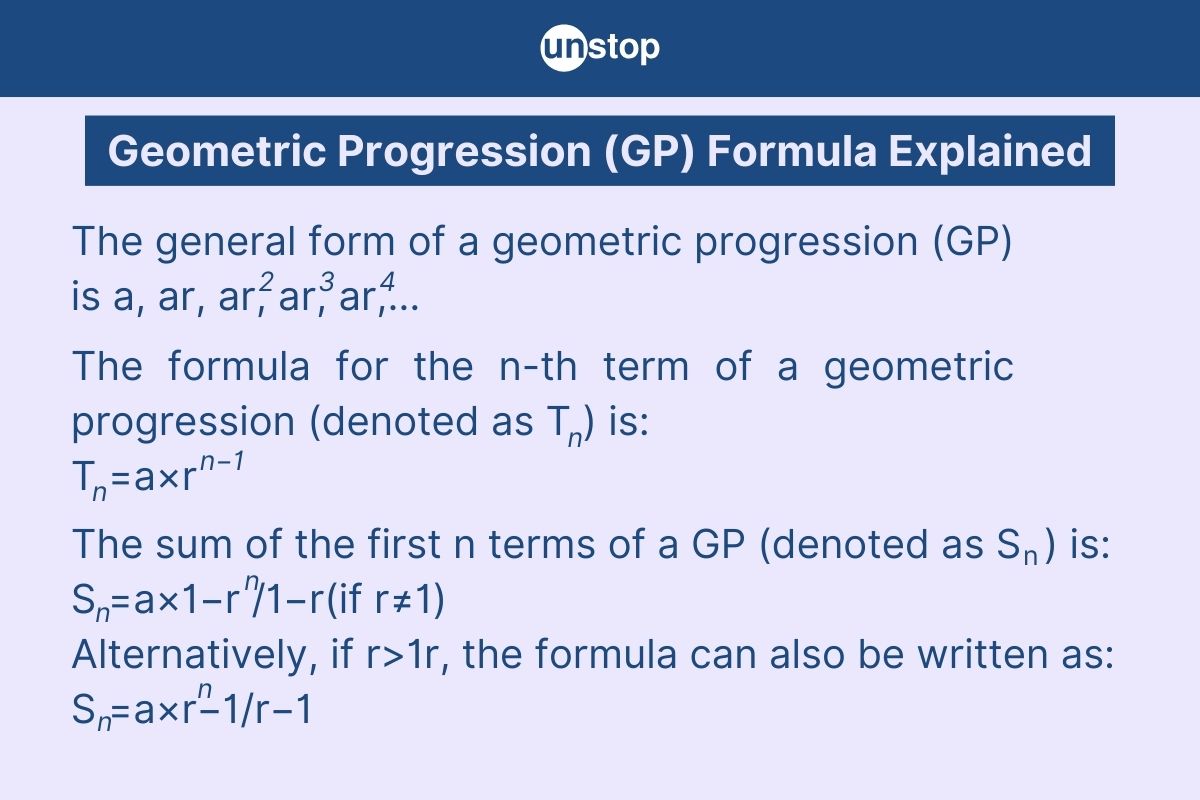- Step 1: The Groundwork
- Step 2: The Three Sections
- Step 3: Practice Makes Improvement
- The Secret Ingredient
- Understanding Basics Of Number Series
- Types Of Number Series Reasoning Questions
- Addition & Multiplication In Number Series
- Square & Cube-Based Number Series Patterns
- Missing Terms & Arranging Sequences
- Tricks & Tips For Solving Number Series
- Selected Number Series Questions With Solutions
- Frequently Asked Questions (FAQs)
- Must Know Terminologies in Blood Relation Questions
- Basic Approaches to Solve Blood Relation Questions
- Types Of Blood Relation Questions
- Tips For Solving Blood Relation Questions
- Multiple Choice Questions (MCQs) with Detailed Explanation
- Conclusion
- Frequently Asked Questions (FAQs)
- Letter Series In Logical Reasoning
- Types Of Letter Series Patterns
- Tips For Solving Letter Series Reasoning
- Best Practice Question Samples With Answers
- Conclusion
- Frequently Asked Questions (FAQs)
- Basics of Problems On Age-Related Questions
- Formula to Solve Problems on Ages-Related Questions
- Types of Age-Related Questions & Examples
- Tips & Tricks for Solving Ages Problems
- Best MCQs on Problems on ages with solved answers
- Conclusion
- Frequently Asked Questions (FAQs)
- Definition of Calendar
- Understanding Days of the Week
- What is a Leap Year?
- Concept of Odd Days in a Century
- Tips For Solving Calendar Reasoning Questions
- Best Calendar Reasoning Questions with Answers (MCQs)
- Frequently Asked Questions (FAQs)
- Basic Concepts of Clock
- Structure of a Clock
- Angle Equilavalence in Clock
- Tips For Solving Clock Questions
- Selected Clock Questions & Answers (MCQs)
- Conclusion
- Frequently Asked Questions (FAQs)
- Understanding The Concept Of Direction Sense
- Tips For Effective Problem-Solving In Direction Sense
- Practical Test Practice Questions And Answers
- Conclusion
- Frequently Asked Questions (FAQs)
- Importance Of Dice Reasoning
- Dice Numbers In Dice Reasoning
- Classification Of Dice
- Constructed Vs Deconstructed Dice
- Tricks & Tips For Solving Dice Problems
- Practice MCQs With Detailed Answers
- Conclusion
- Frequently Asked Questions (FAQs)
- Alphanumeric Series Defined
- Alphanumeric Series In Reasoning Tests
- Tips & Strategies For Solving Alphanumeric Series
- Practice Sample Questions With Detailed Answers
- Conclusion
- Frequently Asked Questions (FAQs)
- Concept Of Mirror Image Reasoning Explained
- Important Terms In Mirror Image Reasoning
- Types Of Mirror Images
- Identifying Correct Mirror Image
- Finding Clock's Mirror Image
- Tips To Solve Mirror Images
- Selected Practice Questions With Answers
- Conclusion
- Frequently Asked Questions (FAQs)
- Concept & Overview Of Input-Output
- Input-Output In Competitive Exams
- Types Of Input-Output Problems
- Strategies, Tips & Tricks For Solving Reasoning Questions
- Selected Practice Questions With Answers
- Conclusion
- Frequently Asked Questions (FAQs)
- Importance Of Finding The Odd One Out
- Tricks And Tips
- How to Find The Odd One Out?
- Solved MCQs with Detailed Explanation
- Conclusion
- Frequently Asked Questions (FAQs)
- Understanding Key Concepts
- Exploring Different Ranking Types
- Formula And Application Of Order And Ranking
- Tips For Solving Order & Ranking
- Selected Practice Questions And Answers
- Conclusion
- Frequently Asked Questions (FAQs)
- Importance Of Pipes & Cistern Aptitude
- Key Terminologies used in Pipes and Cisterns
- Pipes and Cisterns Formula with Examples
- Pipes and Cisterns Shortcut Tricks
- Tips For Solving Pipes & Cistern Problems
- Selected Questions & Answers For Practice (MCQs)
- Conclusion
- Frequently Asked Questions (FAQs)
- Key Concept in Boats and Streams
- Formulas Of Boats & Streams
- Distance & Time Formula
- Tips For Solving Boats & Streams Questions
- Selected Practice Questions With Answers (MCQs)
- Conclusion
- Frequently Asked Questions (FAQs)
- Concept of Mixture and Alligation
- Types Of Alligation Questions
- Formula for Solving Mixture & Alligation
- Tips For Solving Mixture And Alligation
- Selected Questions With Answers For Practice
- Conclusion
- Frequently Asked Questions (FAQs)
- Concepts and Definitions Related to Time and Work
- Important Time And Work Formulas
- Tricks and Tips to Solve Time & Work Questions
- Time And Work MCQs with Detailed Solution
- Conclusion
- Frequently Asked Questions (FAQs)
- What is Harmonic Progression(HP)?
- Formula to find the nth Term in Harmonic Progression
- Formula to find the Sum of the nth Term in HP
- What is Harmonic Mean?
- Harmonic Progression Solved Best MCQs
- Conclusion
- Frequently Asked Questions (FAQs)
- What is Mensuration in Maths?
- What are 2D figures in Mensuration?
- What are 3D figures in Mensuartion?
- Basic Terminologies In Mensuration
- Basic 2D Formulas in Mensuration
- Basic 3D Formulas in Mensuration
- 2D vs 3D in Mensuration
- Solved Questions With Solutions (MCQs)
- Conclusion
- Frequently Asked Questions (FAQs)
- Relationship Between Time, Speed And Distance
- Conversion Units Time, Speed And Distance
- Average & Relative Speed: Two Trains Moving in the same or opposite direction
- Solved MCQs on Time, Speed And Distance
- Conclusion
- Frequently Asked Questions (FAQs)
- What is Simplification in Maths?
- BODMAS Rule in Simplification Explained
- Simplification & Approximation Relation
- Key Terms in Simplification
- Examples Of Simplification Techniques
- Simplification Questions With Solved Answers (MCQs)
- Conclusion
- Frequently Asked Questions (FAQs)
- Height And Distance Important Terms
- Right Angled Triangle In Trigonometry
- Trigonometric Ratios
- Solved Examples For Better Understanding
- Height And Distance Applications In Trigonometry
- Height And Distance Practice Questions & Answers
- Conclusion
- Frequently Asked Questions (FAQs)
- Defining Interest Types
- Simple Interest Vs. Compound Interest
- Selected Solved Questions & Answers
- Conclusion
- Frequently Asked Questions (FAQs)
- Basic Concepts Of Profit And Loss
- Determining Selling Price
- Calculating Discounts
- Formulas For Calculating Profit And Loss
- Examples Of Profit And Loss
- Profit & Loss Questions With Detailed Solution
- Conclusion
- Frequently Asked Questions (FAQs)
- Defining Angle Of Elevation
- Key Terms Used In Angle Of Elevation
- Angle of Elevation Formula with Example
- Angle of Elevation vs. Angle of Depression
- Angle of Elevation MCQs with Answers
- Conclusion
- Frequently Asked Questions (FAQs)
- Defining HCF And LCM
- Calculation Methods Of HCF And LCM
- HCF By Prime Factorization Method
- LCM By Prime Factorization Method
- Difference Between HCF And LCM
- HCF & LCM Practice Questions With Answers
- Conclusion
- Frequently Asked Questions (FAQs)
- What is fraction and decimal?
- Understanding Decimal Fraction
- Place Value in Decimal Fraction
- Mathematical Operations with Decimal Fraction
- Practice with Solved Examples
- Summary
- Frequently Asked Questions
- All About Decimals
- All About Fractions
- How to Convert a Decimal into Fraction
- Simple vs Recurring Decimals
- Converting Recurring Decimals to Fractions
- Conversion Charts
- Practice Questions (With Solutions)
- Closing Thoughts
- Frequently Asked Questions
- What is Arithmetic Mean?
- Arithmetic Mean Formula- Ungroup Data & Group Data
- Merits of Arithmetic Mean
- Demerits of Arithmetic Mean
- Alternatives to Arithmetic Mean
- What is the Weighted Arithmetic Mean?
- Arithmetic vs. Geometric Mean
- Arithmetic Mean Application in Statistical Analysis
- Arithmetic Mean Practice Questions with Explanation
- Frequently Asked Questions
- What is Geometric Progression?
- Key Properties of Geometric Progression
- General Form Of Geometric Progression
- General Term or the Nth Term of Geometric Progression
- The sum of nth Terms of GP
- Types Of Geometric Progression
- Solved Questions and Answers of GP
- Conclusion
- Frequently Asked Questions (FAQs)
- Average in Maths
- Average Formula in Maths
- Differentiating Types of Average
- How to Calculate Average of Negative Numbers?
- Practical Applications of Averages
- Average Questions For Practice
- Frequently Asked Questions
- What is Simple Interest in Maths?
- Simple Interest Formula Explained
- Simple Interest Formula for Years, Months & Days
- Simple Interest Examples & Practice Questions
- Conclusion
- Frequently Asked Questions (FAQs)
- Defining Mathematical Ratios
- Understanding Proportions Fundamentals
- Differentiating Ratios from Proportions
- Ratio and Proportion Formulas
- Properties of Ratio and Proportion
- How to Solve Ratio and Proportion Problems
- Ratio and Proportion Problems (With Solutions)
- Summary
- Frequently Asked Questions
- What is Number in Maths?
- Types of Numbers With Example
- Real vs Complex Numbers Explored
- Basic Operations on Numbers
- Practice Questions (With Solutions)
- Frequently Asked Questions
- What is Arithmetic Progression (AP) in Maths?
- Important Terminologies in Arithmetic Progression
- Basic Terms in Arithmetic Progression
- General Form Of Arithmetic Progression Series
- Types Of Arithmetic Progression
- Solved Questions With Explanation (MCQs)
- Conclusion
- Frequently Asked Questions (FAQs)
- Understanding Basic Concept
- Importance Of Train Problems In Aptitude
- Tips To Solve Train Problems
- Selected Practice Questions & Answers
- Conclusion
- Frequently Asked Questions (FAQs)
- Definition Of Mode
- Calculating Mode For Ungrouped Data
- Calculating Mode For Grouped Data
- Bimodal, Trimodal & Multimodal Distributions
- Comparing Mean, Median & Mode
- Selected Practice Questions With Answers
- Conclusion
- Frequently Asked Questions (FAQs)
- Important Concept In Races And Games
- Calculating Time, Speed & Distance
- Importance Of Races And Games Problems
- Sample Practice Questions With Answers
- Conclusion
- Frequently Asked Questions (FAQs)
- Types Of Partnership
- Formula For Partnership Questions
- Tips To Solve Partnership Aptitude Questions
- Selected Partnership Questions (Practice MCQs)
- Conclusion
- Frequently Asked Questions (FAQs)
Geometric Progression (GP): Definition, Formula, Nth Term And More

Understanding geometric progression is crucial for students preparing for competitive and placement interviews. It showcases a deep understanding of mathematical patterns and growth, which can impress interviewers.
Students can demonstrate their analytical skills and problem-solving abilities by grasping concepts like the ratio between consecutive terms and applying them to real-world situations.
What is Geometric Progression?
A geometric progression (GP) is a sequence of numbers where each term after the first is obtained by multiplying the previous term by a constant value called the common ratio.
Mathematically, a geometric progression looks like this:
a,ar,ar2,ar3,…
- a is the first term,
- r is the common ratio (a fixed number),
- Each term is obtained by multiplying the previous term by r.
For example, in the sequence 2, 6, 18, 54,…, the common ratio is 3 because each term is 3 times the previous one.

Key Properties of Geometric Progression
Let us consider some of the important properties of geometric progression:
Constant Ratio
Each term is obtained by multiplying the previous term by a constant value called the common ratio (r). This ratio remains the same throughout the sequence.
r=Tn+1/Tn
General Term
The nth term (Tn) of a GP can be found using the formula:
Tn=a×rn−1
- a is the first term,
- r is the common ratio,
- and n is the term number.
Product of Two Terms
The product of any two terms equidistant from the start and end of a finite GP is the same. If you have a GP with terms T1,T2,…,Tn then:
Tk×Tn−k+1=a×Tn
This holds for all k.
Sum of First n Terms (Finite GP)
The sum of the first n terms of a geometric progression is given by:
- If r≠1r, then Sn=a(1−rn)/1−r
- If r=1, then Sn=n×a
Sum of Infinite GP (only if ∣r∣<1|)
For an infinite geometric progression, the sum is given by:
S∞=a/1−r
This only applies if the absolute value of the common ratio ∣r∣ is less than 1.
Non-zero Terms
In a geometric progression, none of the terms can be zero (since dividing or multiplying by zero would disrupt the sequence).
Exponential Growth or Decay
Depending on whether the common ratio r is greater than 1 (growth) or between 0 and 1 (decay), the sequence either increases or decreases exponentially.
General Form Of Geometric Progression
The general form of a geometric progression can be expressed as a, ar, ar2, ar3, ..., ar(n-1), where 'a' represents the first term, and 'r' denotes the common ratio.
The sequence starts with 'a', and each subsequent term is created by multiplying the previous term by 'r'. This consistent multiplication creates a pattern where the terms increase or decrease at a fixed rate determined by the common ratio.
Common Ratio
The common ratio plays a crucial role in establishing the relationship between consecutive terms in a geometric progression. It dictates how each term is related to its preceding one. If 'r' is greater than 1, the terms will increase exponentially. Conversely, if 'r' is between 0 and 1, the terms will decrease gradually.
For instance, in a GP with a common ratio of 2 starting from 1 (1, 2, 4, 8, ...), each term is twice the preceding one. This showcases how the common ratio influences growth or decline during progression.
General Term or the Nth Term of Geometric Progression
The general term or nth term of a geometric progression (GP) is the formula used to find any specific term in the sequence without having to list all the preceding terms.
The formula is Tn=a×rn−1
- Tnis the nth term,
- a is the first term of the GP,
- r is the common ratio,
- n is the position of the term in the sequence.
Example of Nth Term
For the geometric progression 3,6,12,24,…
- First term a=3
- Common ratio r=6/3=2
To find the 5th term (T5):
T5=3×25−1=3×24=3×16=48
The sum of nth Terms of GP
To find the sum of the first 'n' terms of a geometric progression (GP), you can use these formulas based on the common ratio 'r':
1. When r≠1: The sum Sn of the first 'n' terms of a GP is given by: Sn=a(rn−1)/r−1
- a is the first term,
- r is the common ratio,
- n is the number of terms.
2. When r=1: If the common ratio r is 1, the formula simplifies to Sn=n×a
Examples
-
For r≠1:
- Sequence: 2,6,18,54,…
- First term a=2, common ratio r=3, and n=4 terms.
Sum S4 calculated as:
S4=2(34−1)/3−1=2(81−1)/2=2×80/2=80 -
For r=1:
- Sequence: 5,5,5,5,…
- First term a=5, common ratio r=1, and n=4 terms.
Sum S4 is calculated as:
S4=4×5=20
Types Of Geometric Progression
Geometric progressions (GPs) can be categorized into different types based on their common ratio rrr. Here’s an overview of the main types:
-
Standard Geometric Progression: A sequence where each term is obtained by multiplying the previous term by a constant ratio rrr.
-
Finite Geometric Progression: A sequence with a specific number of terms. It ends after nnn terms.
-
Infinite Geometric Progression: A sequence with an unlimited number of terms, continuing indefinitely.
-
Convergent Geometric Progression: An infinite GP where ∣r∣<1|r| < 1∣r∣<1. The sum of the terms converges to a finite value.
-
Divergent Geometric Progression: An infinite GP where ∣r∣≥1|r| \geq 1∣r∣≥1. The sum of the terms does not converge to a finite value.
-
Negative Geometric Progression: A GP where the common ratio rrr is negative, causing the terms to alternate in sign.
-
Geometric Series: The sum of the terms in a geometric progression. This is not a type of GP per se but a related concept.
These classifications help us understand the behaviour and properties of different geometric progressions and their sums.
Click here to enhance and upskill your quantitative aptitude by exploring different topics, including geometric progression.
Solved Questions and Answers of GP
Practice is the key to excelling in quantity aptitudes, such as geometric progression! Below are some of the top selected practice questions with answers:

Question 1: What is the fifth term of the geometric progression 2, 4, 8, 16, ...?
a) 23
b) 43
c) 18
d) 32
Solution: d) 32
Explanation: Tn=a×r(n−1)
Tn is the nth term of the progression
a is the first term of the progression
r is the common ratio of the progression
First term (a): 2
Common ratio (r): 4 ÷ 2 = 2
n: 5
Substituting the values into the formula:
T5=2×2(5−1)= 2×24= 2×16
T5=32
So, the fifth term of the geometric progression is 32.
Question 2: If the first term of a geometric progression is 3 and the common ratio is 2, what is the fourth term?
a) 24
b) 18
c) 20
d) 32
Solution: a) 24
Explanation: Follow the steps as provided in question 1, and plug these values into the formula to solve the question to get the answer: r=2, a=3, n=4.
Question 3: What is the common ratio of the geometric progression 1, 2, 4, 8, ...?
a) 3
b) 2
c) 4
d) 5
Solution: b) 2
Explanation: Divide the nth term by the (n - 1)th term
Question 4: If the third term of a geometric progression is 16 and the common ratio is 2, what is the first term?
a) 4
b) 6
c) 8
d) 2
Solution: a) 4
Explanation: Plugging these values a=16, r=2, n=3 into the formula, Tn=a×r(n−1) will give you the answer.
Question 5: What is the sum of the first 5 terms of the geometric progression 3, 6, 12, 24, ...?
a) 90
b) 86
c) 93
d) 88
Solution: c) 93
Explanation: Plugging these values a=3, r=2, and n=5 into the formula Sn = a[(rn – 1)/(r – 1)]. It will provide the correct answer as 93.
Question 6: If the sum of the first three terms of a geometric progression is 42 and the common ratio is 2, what is the first term?
a) 7
b) 8
c) 9
d) 6
Solution: d) 6
Explanation: Plugging these values Sn=42, r=2, n=3 into the formula Sn = a[(rn – 1)/(r – 1)]. It will provide the correct answer as 6.
Question 7: What is the seventh term of the geometric progression 5, 10, 20, 40, ...?
a) 320
b) 220
c) 380
d) 423
Solution: a) 320
Explanation: Tn = a×rn-1
r=2, a=5, n=7
Question 8: If the third term of a geometric progression is 27 and the fifth term is 243, what is the common ratio?
a) 6
b) 3
c) 8
d) 9
Solution: 3
Explanation: Tn = a×rn-1
T5/T3
Question 9: Find the sum of the first 10 terms of the geometric progression 2, 6, 18, 54, ...?
a) 59048
b) 49152
c) 53248
d) 57344
Solution: a) 59048
Explanation: Sn = a[(rn – 1)/(r – 1)]
r=3, n=10, a=2
Question 10: If the sum of the first four terms of a geometric progression is 30 and the common ratio is 3, what is the first term?
a) 2.5
b) 0.75
c) 5
d) 1.875
Solution: b) 0.75
Explanation: Sn= a[(rn – 1)/(r – 1)]
Sn=30, r=3, n=4
Conclusion
The comprehensive exploration of geometric progression has shed light on its fundamental concepts, properties, and applications. One can grasp the essence of this mathematical sequence by delving into its general form, common ratio, types, Nth term explanation, and summing techniques.
The insights gained from analyzing finite and infinite sums enhance your mathematical proficiency and equip you with a powerful tool for analyzing patterns and predicting outcomes in diverse contexts.
Time For A Short Quiz
Frequently Asked Questions (FAQs)
1. What is a geometric progression?
In geometric progression, a series of numbers is created by multiplying each successive term by a constant, non-zero value known as the common ratio.
2. How is the Nth term of a geometric progression calculated?
The nth term of a GP can be calculated using the formula Tₙ = a×rn-1, where (Tₙ) represents the nth term. The initial term is denoted by (a), the unchanging ratio is represented as (r), and (n) indicates the term's position.
3. What does summing finite GP terms refer to?
Summing finite GP terms refers to finding the total sum of a specific number of terms in a geometric progression.
4. How can geometric progressions be applied in real-life scenarios?
Geometric progressions find applications in various fields, such as compound interest calculations, population growth models, computer algorithms (searching techniques), and physics (decay processes). Understanding geometric progressions aids in efficiently analyzing exponential growth or decay situations.
Suggested reads:
- Arithmetic Mean: Get Definition, Formula, Solved Practice Questions
- HCF And LCM Methods: Formula, Practice Questions And Answers
- Decimal To Fraction Conversion Guide (+ Solved Questions)
- Decimal Fraction: Find Types, Operations & Practice Questions
- Angle Of Elevation: Formula With Practice Questions & Answers
Instinctively, I fall for nature, music, humor, reading, writing, listening, traveling, observing, learning, unlearning, friendship, exercise, etc., all these from the cradle to the grave- that's ME! It's my irrefutable belief in the uniqueness of all. I'll vehemently defend your right to be your best while I expect the same from you!
Login to continue reading
And access exclusive content, personalized recommendations, and career-boosting opportunities.
Subscribe
to our newsletter
















Comments
Add comment